-
Dainichi, the Cosmic Buddha
Originally built in another location as a Buddhist temple of the Shingon school, Enshoji was moved to its present site in the district of Ozaki in 1444 after a flood. It was subsequently converted to the Rinzai school of Zen Buddhism, but some evidence of the temple’s former affiliation still remains. Walk up the stone stairs toward the small main gate, and you will see the Dainichido Hall on your right.
Dainichi Buddha, a deity associated with cosmic forces in the universe, is often given a prominent place of worship in temples that belong to the Shingon school. As the chief abbot pulls open the doors of the hall, you will see a great seated statue of Dainichi glowing before you. It is said to have been carved following an oracle received at Kasuga Taisha Shrine in Nara Prefecture, since Dainichi Buddha was associated with the Shinto deities revered there. The statue was worshipped on Mt. Mikasa in Nara and later brought to Enshoji Temple.
The seated statue of Dainichi Buddha is 2.52 meters tall and is believed to have been sculpted in the early twelfth century. As the principal object of worship, it is placed in the center of the altar. The body of the statue has a powerful, inverted triangle shape with broad shoulders, and the style of the bowl-shaped crown is reminiscent of Buddha statues in Southeast Asian countries such as Tibet. The gold foil applied in later years still shines brightly, adding to the impression that one is truly in the presence of the supreme “Buddha of the Cosmos.” -
-
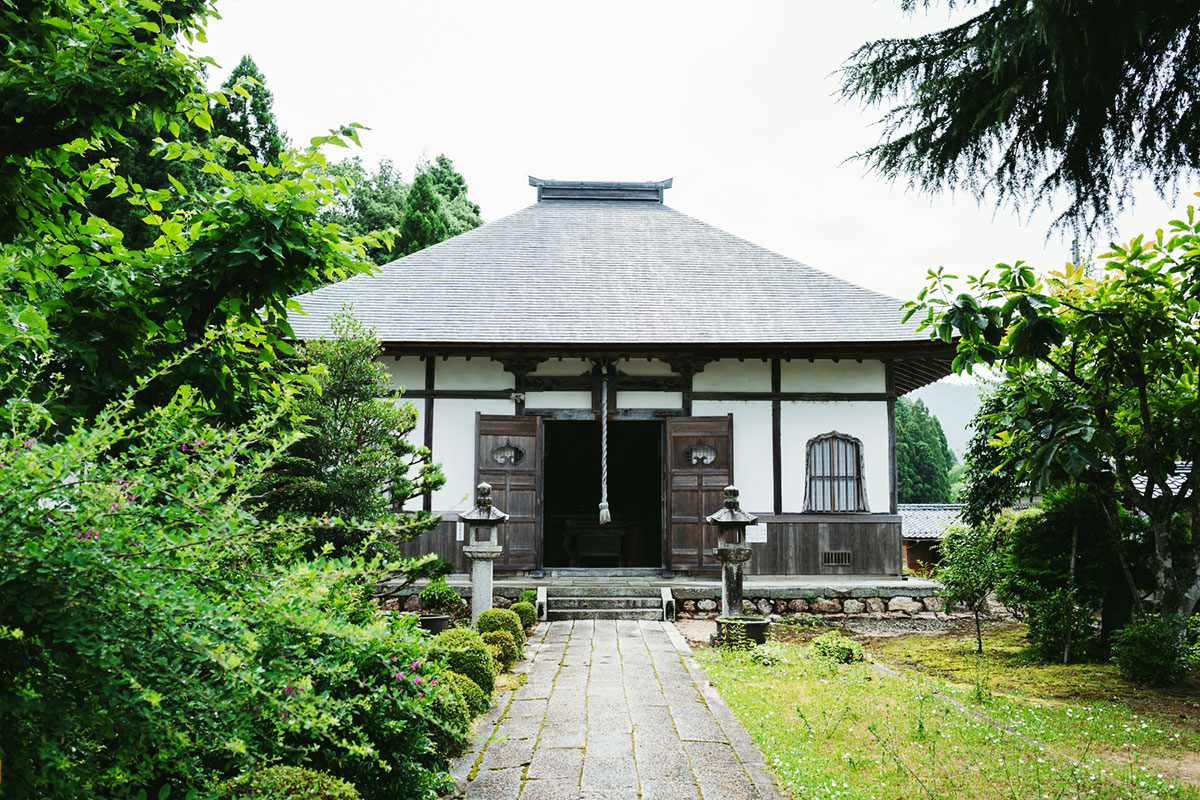 The solidly built Dainichi Hall
The solidly built Dainichi Hall -
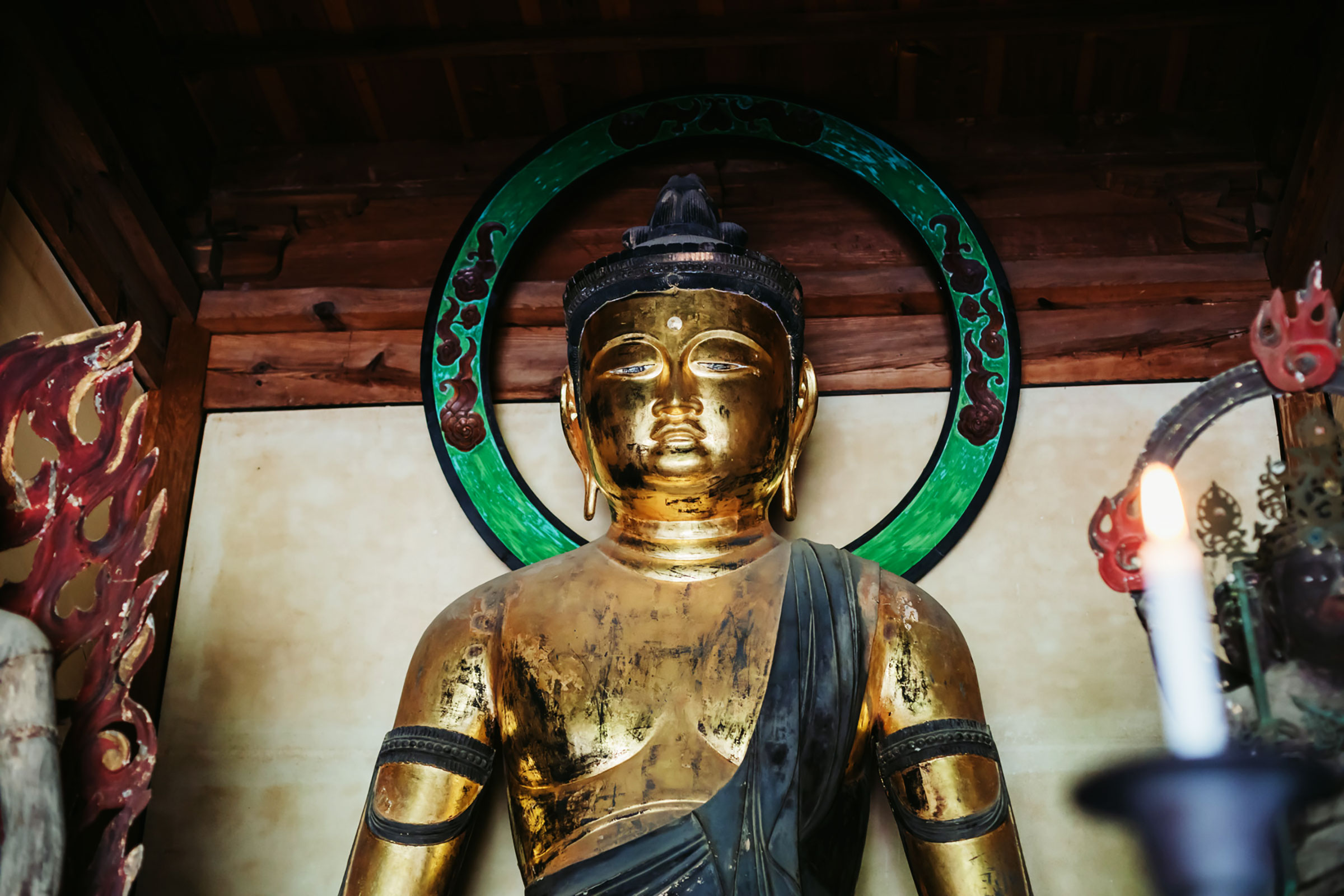 A luminous, large seated statue of Dainichi Nyorai
A luminous, large seated statue of Dainichi Nyorai
-
-
Gazing Into the Eyes of Fudo Myo-o
A statue of Fudo Myo-o, the Immovable Wisdom King, stands on the left side of Dainichi Buddha. Unlike the serene expression of the Buddha, Fudo Myo-o exudes a commanding and fearsome presence. It is a life-sized statue of 1.59 m made of hinoki cypress using the yosegi-zukuri joined woodblock technique. Shift a little to the right and observe the black eyes of the Wisdom King. You will notice that one eye is looking up, and the other down. This expression is common in works of the Heian period (794–1185) and is called tenchigan (“heaven and earth eyes”). It is said to represent the commitment to saving not only those who Fudo Myo-o can see, but all other beings in the world as well.
The realistic depiction of the lean physique and flowing garments of Fudo Myo-o make it seem that he might step forward and begin walking towards you at any moment. -
-
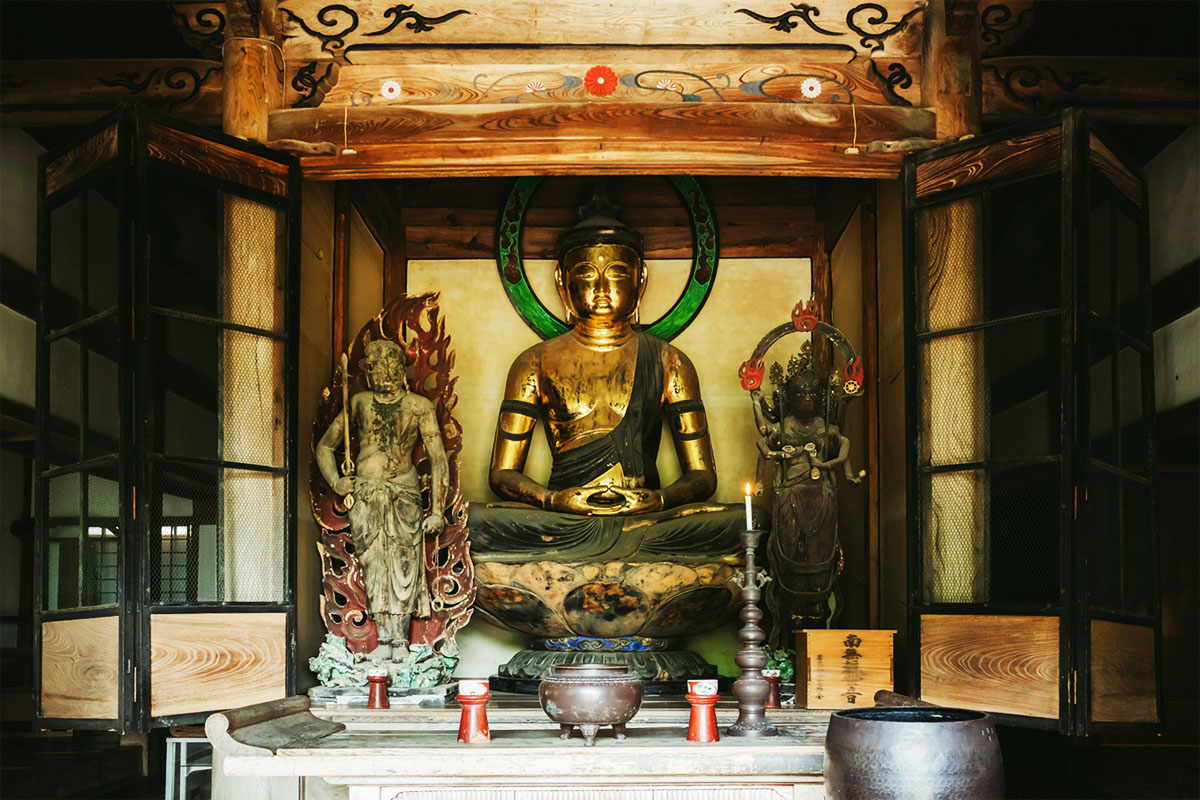 Fudo Myoo standing on the left and Myoo on the right
Fudo Myoo standing on the left and Myoo on the right -
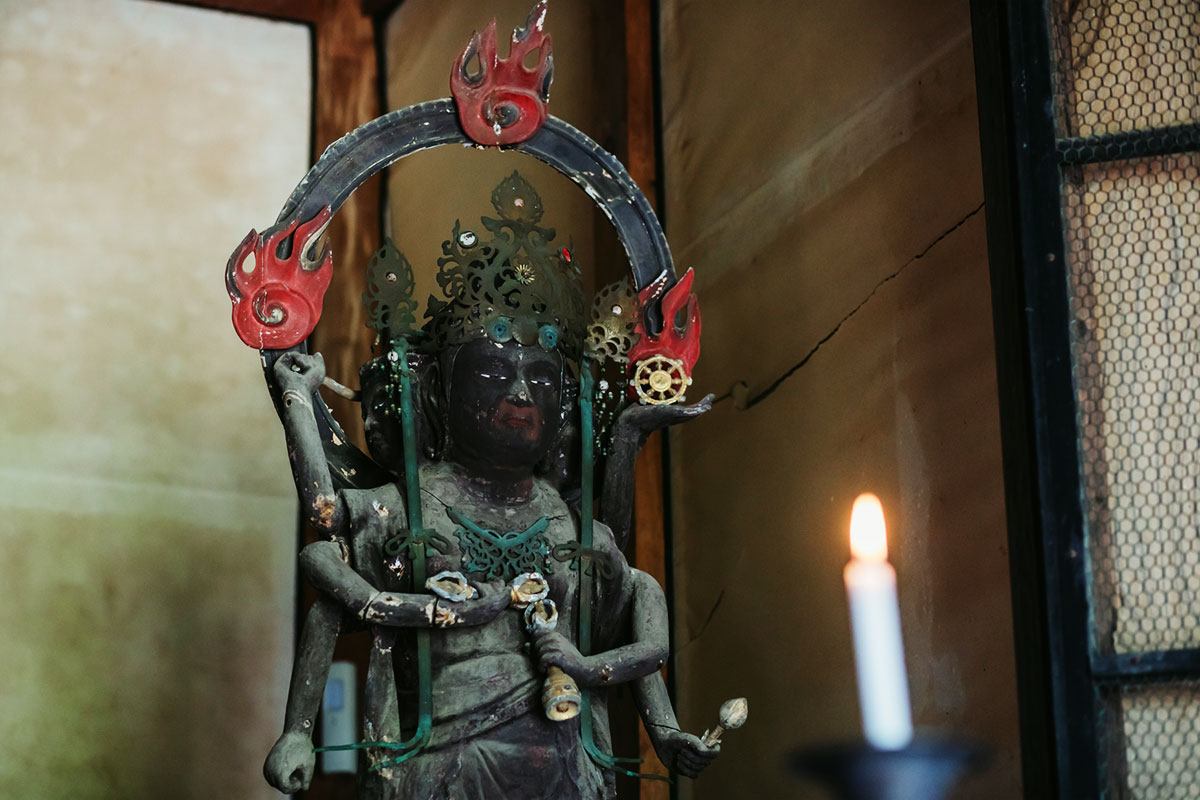 Myoo's black eyes facing up and down, "Tenchi Gen" (heaven and earth eyes)
Myoo's black eyes facing up and down, "Tenchi Gen" (heaven and earth eyes)
-
-
A Garden Integrated with Nature
If you pass between the two buildings beside the Dainichido Hall, you will see a moss garden that seems to recreate the expanse of the surrounding mountains in miniature. If you view this garden from the tea house that faces it, you may glimpse a slightly smaller cosmos than the one you sensed when you stood before the Dainichi Buddha statue.
The garden at Enshoji is designed for viewing from a seated position. It has a clear spring in the center, a small shrine to the local tutelary deity on the left, and a set of three stones in the rear at the top of a small slope. The stones represent a triad of Buddhist divinities. The garden is also known as a habitat for forest frogs, and in spring colorful azalea bushes large and small delight the eye.
The rocks set in the moss are brown in color, however, they become reddish when it rains because they contain iron. Gazing at this garden from the front of the tea house, you too may feel that you are becoming one with nature. -
-
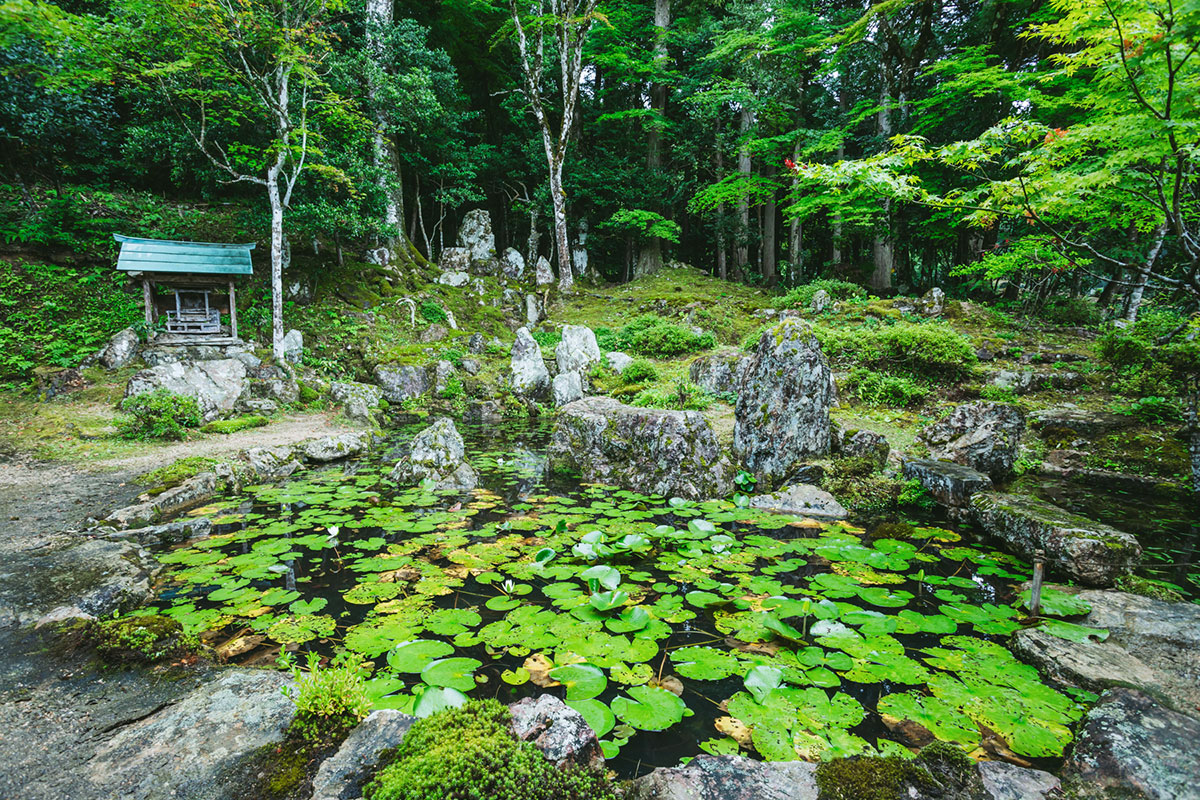 Zakan-style (designed to be viewed while seated) forest garden with a spring
Zakan-style (designed to be viewed while seated) forest garden with a spring -
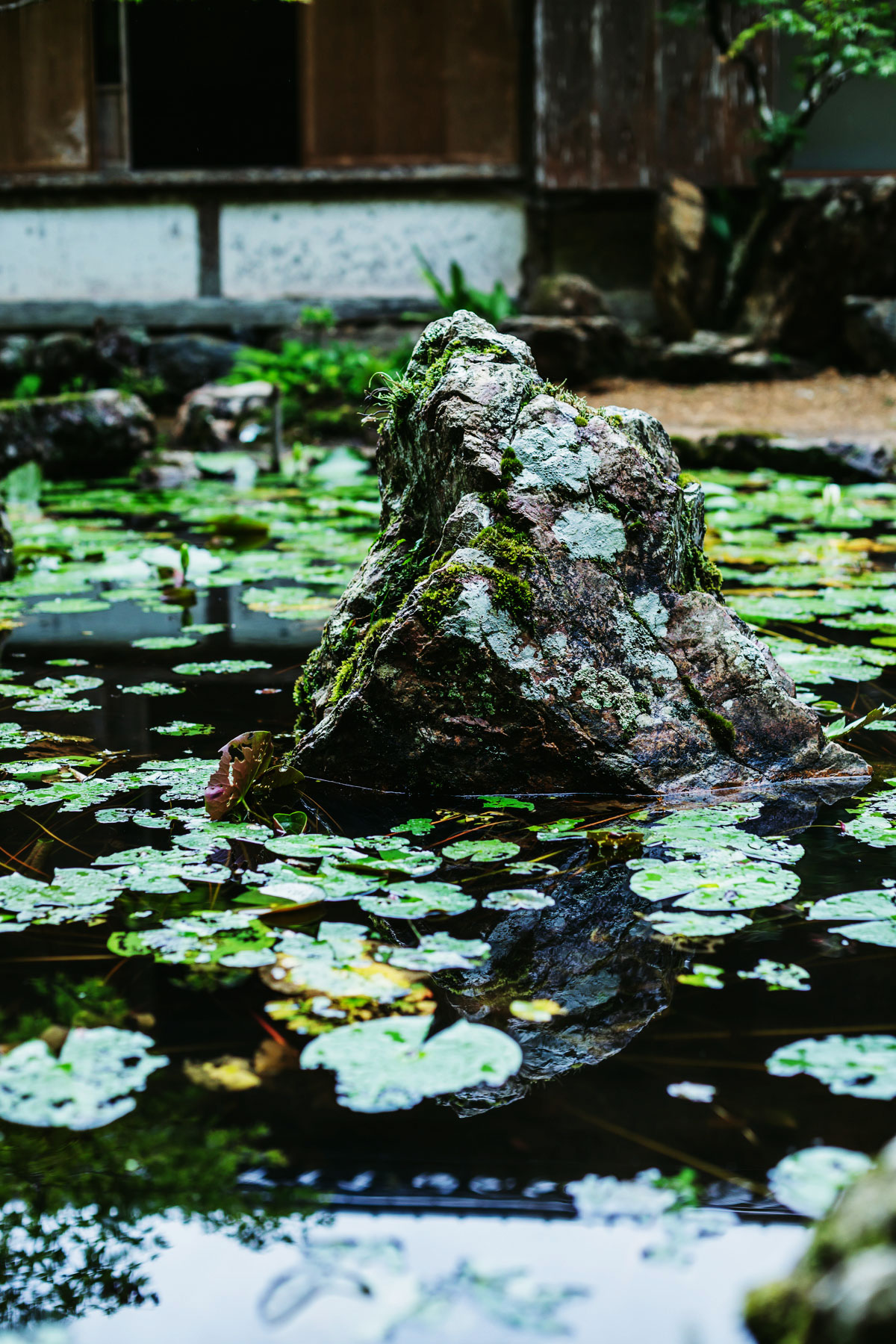 Garden stones whose reddish color increases as they get wet
Garden stones whose reddish color increases as they get wet
-
